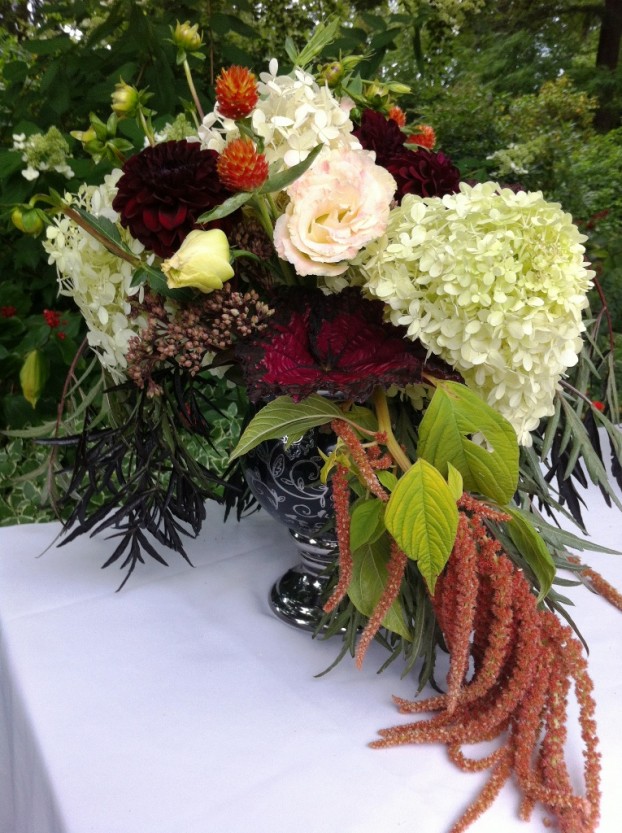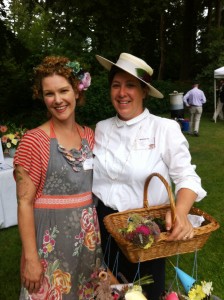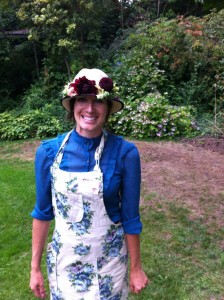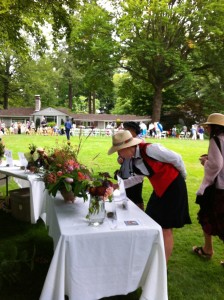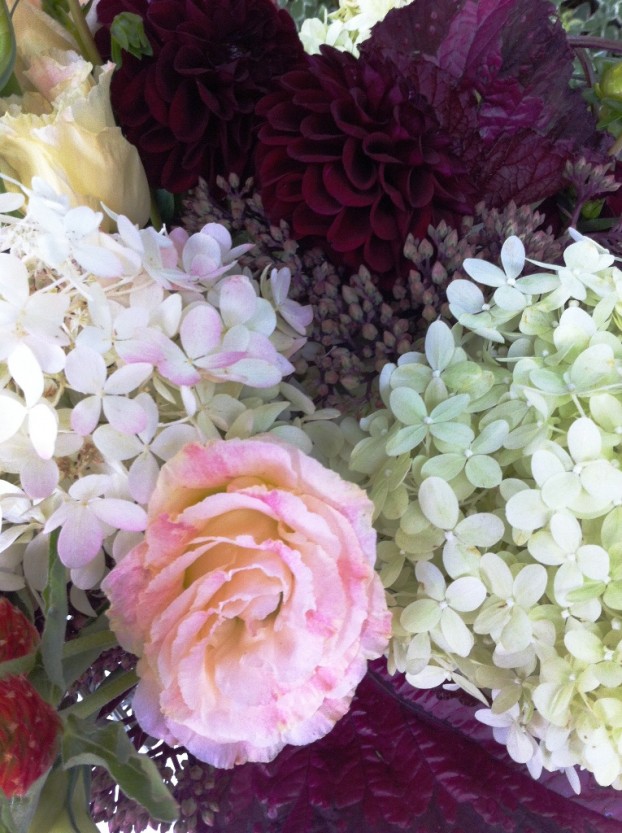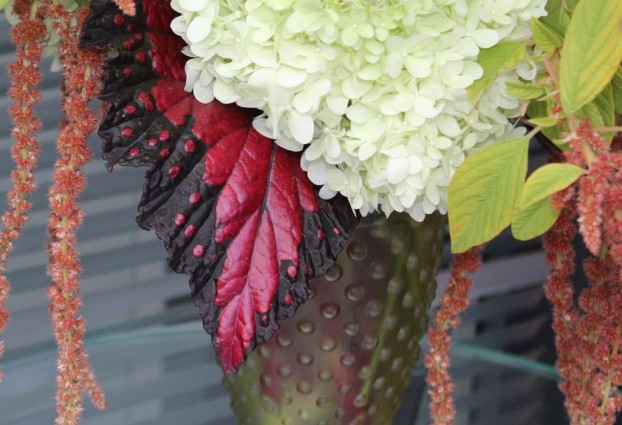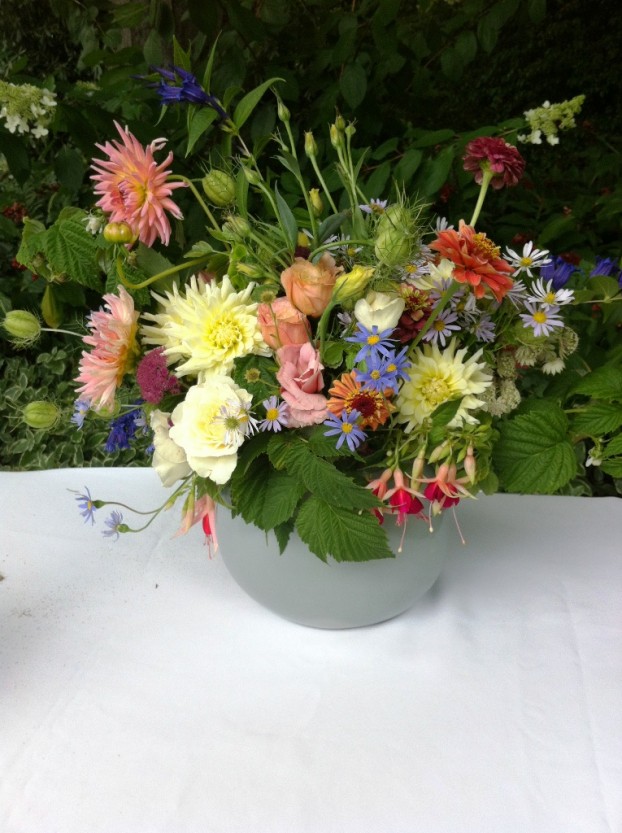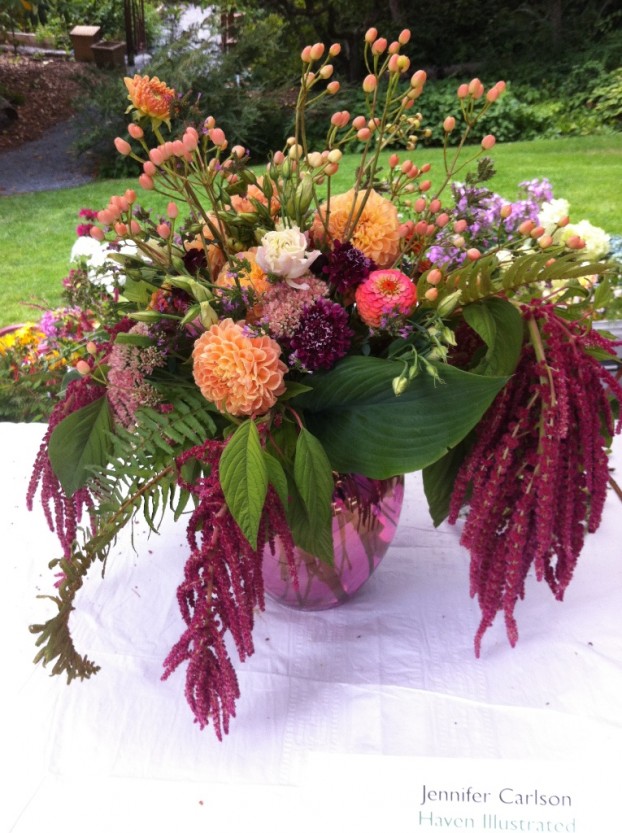Week 31 // Slow Flowers Challenge (what happened to Week 30?)
August 10th, 2015
True confessions: I’m overwhelmed these days. The epic move last month from a huge house to a small condo (what to do with all that stuff?), combined with an intense travel schedule and a few overly voracious consulting projects . . . and I am scrambling to catch up. I can’t quite see the end of this tunnel until 2016.
The good news, however, is that flowers keep blooming and defining each season whether I clip and arrange them – or not!
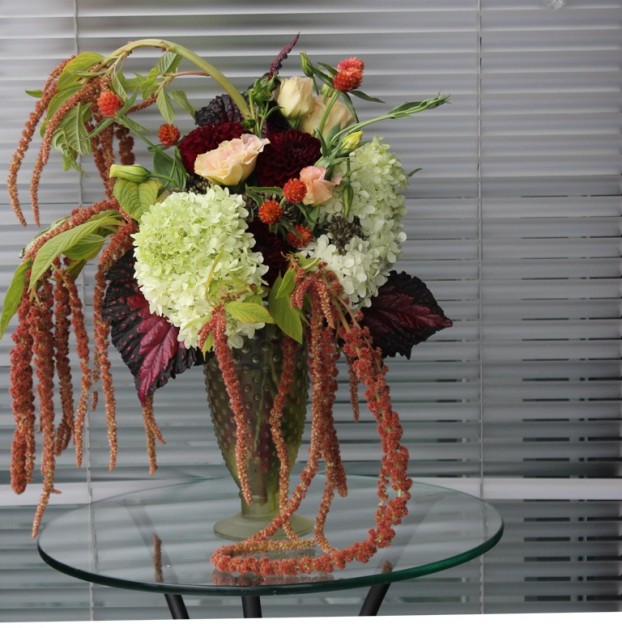
This was my “practice” bouquet, using many of the same ingredients (only the sambucus foliage is missing).
Please accept this entry in the Slow Flowers Challenge, Week 31. We’ll just have to write off Week 30 as a lost cause (maybe I’ll double-up sometime soon to redeem myself)!
This past weekend I participated along with four other talented plantswomen and designers in an event called Dunnton Abbey Garden Party.
The play on words with the popular PBS series “Downton Abbey” was intentional, as the folks at one of Seattle’s most lovely private estate gardens, The E. B. Dunn Historic Garden Trust, held a lawn party inspired by the gentile fetes we’ve watched on Downton Abbey over the years.
It was all quite fitting, as Dunn Gardens date back to 1915, a contemporary period from Downtown Abbey’s first episodes.
Croquet, musicians, a vintage car show, people in period garb, a cake walk and many more activities were on hand. It was lovely and I especially enjoyed seeing everyone unplugged from modernity (although many did have their cell phones out to snap photographs, I’ll give you that).
Grace Hensley of eTilth, a Slow Flowers friend here in Seattle, coordinated the floral design demonstrations. She invited Lacey Leinbaugh of Blue Lace Design; Melissa Feveyear of Terra Bella Flowers; Jennifer Carlson of Haven Illustrated and me to present “Edwardian Floral Design.”
We each were given a generous budget to shop for locally-grown flowers at the Seattle Wholesale Growers Market. A few weeks prior, we did a walk-through of the grounds at Dunn Gardens with co-curator Charles Price, pointing out stems, leaves and flowers that caught out eyes.
Charles judiciously cut those elements for us, too, so when I arrived with my own “bucket” of items from the Growers Market, there were dozens of other buckets overflowing with the truly local, of-the-moment, garden harvest. That added hydrangeas, phlox, ninebark, sambucus, rodgersia, ferns, hostas, fuchsias, monarda, meadow rue (Thalictrum sp.), crocosmia and more to the mix!
What is Edwardian floral design, anyway?
I honestly didn’t have time to do research in advance, but by the time I started my bouquet, I had a few thoughts to share.
I told the audience that the Edwardians were the original “Slow Flowers” florists because they only used local and in-season flowers, probably clipped from their own gardens.
Whether you were a member of the “upstairs” class relying on gardeners and hothouse blooms or a member of the “downstairs” class cutting from the edge of a meadow or woodland, the flowers reflected what nature had to offer.
The other idea I shared had to do with palette, and this was inspired by my textiles background. At the time, chemical textile dyes were not yet as popular or widespread as natural, plant-based dyes. And to me, that notion reflects a softer, muted, less vivid color scheme in textiles for apparel and interiors.
The tea-stained, sepia-toned palette of my imagined Edwardian bouquet was reflected in the flowers and foliage. I began with a blush-and-faded mix of ‘Limelight’ hydrangeas taking on a slightly pink tinge; not-quite-pink lisianthus blooms; pale terracotta draping amaranthus, and strawberry-colored gomphrena.
The darker accents lent a moodiness to the arrangement: Deep maroon dahlias; dark purple sedum heads; purple sambucus foliage; and berry-black Rex Begonia foliage, variety ‘Shadow King Rothko’.
Whether it’s truly Edwardian or not, the bouquet felt like a period piece in the black-and-silver Goodwill vase!
Here is a list of the ingredients, with my thanks to each farmer who grew them:
From Diane & Dennis at Jello Mold Farm, Mt. Vernon, Washington:
- ‘Limelight’ hydrangea blooms
- Amaranthus
- Dark purple sedum
From Vivian at Everyday Flowers, Stanwood, Washington:
- Gomphrena
- Lisianthus
- Maroon dahlias
From the Dunn Garden Borders: Sambucus foliage
From Seattle Wholesale Growers Market: Rex Begonia, variety ‘Shadow King Rothko’
Enjoy these photos from my fellow designers, each of whom did a magnificent job!
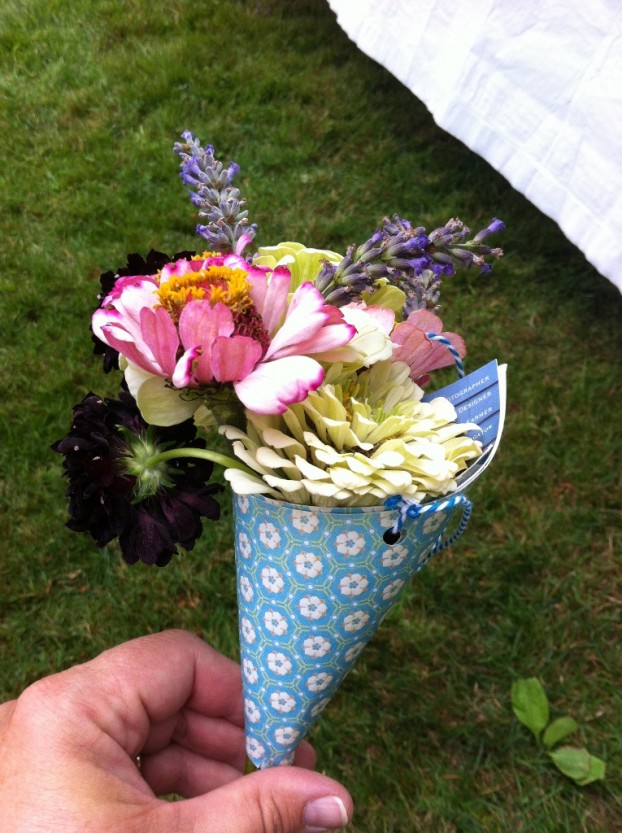
Grace thoroughly embraced the Edwardian spirit and she made these adorable paper-cone poseys to sell from her basket as she strolled the lawn in her period attire.
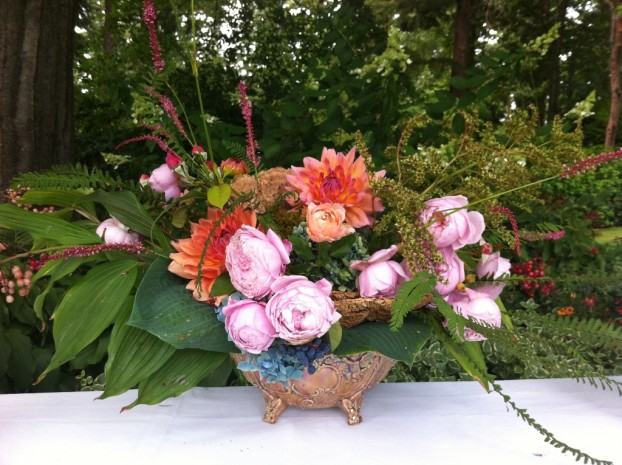
Melissa Feveyear’s bouquet wowed everyone! She chose a pearly pink and coral palette with a few characteristic surprises.









